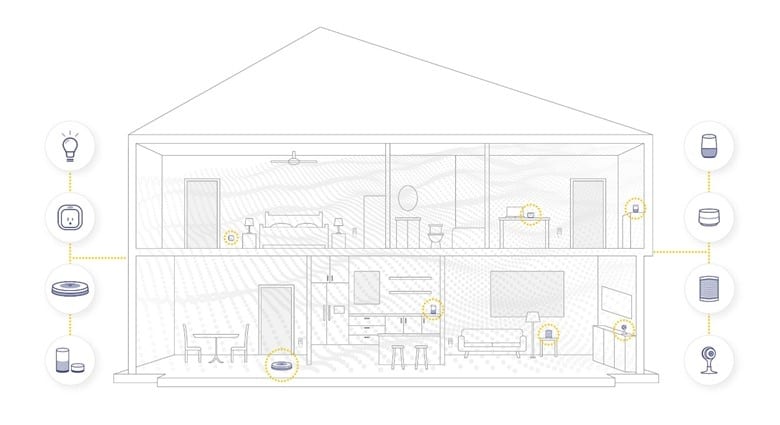This year, 45.4 million Americans will talk to an Artificial Intelligent (AI) assistant inside smart speakers, says research firm eMarketer. If 2017 was the year consumers knowingly (even with some skepticism) let AI into their home with the purchase of a smart home/WiFi enabled device or two, 2018 will be the year they embrace AI.
As proven with the statistic from eMarketer, AI devices are common to us now. Americans are embracing virtual assistants to manage everything from our television, lighting, thermostats, home monitoring and food delivery. The technology, although seemingly high-tech, is swiftly integrating into homes and becoming part of our everyday fabric. For instance, I’ve heard people jokingly acknowledge their children refer to Alexa as part of the family or that they now know what the Cloud is as they toss out their CD collection.
So how did a “nice to have” parlor trick that’s used for one application turn into a “need to have” so quickly? To understand that concept, we have to look into the added and somewhat below the surface benefits that home automation is offering consumers:
Energy Savings
One of the beauties behind automation is machine learning. Smart home devices available now not only react to people’s movements and commands, but they learn and adopt. With consumers buying more WiFi enabled devices, outlets are filling up fast in homes and the smart meter is tallying energy used accurately in real time. Devices that track people’s motion in the home now have the ability to classify and localize motion, and provide context and awareness that can automatically trigger the lights to shut on or off, or have Alexa switch the speaker playing the music as someone moves to another room in the house. Similarly, devices that can be controlled remotely can be turned on and off in the instance when someone forgets to flip the switch in person. An example of this would be leaving the heater on and instead of smacking your head when you get to work, you can use your mobile device to turn off the heater and not rack up the added expense of heating an empty house. With the average American spending about $145 a month on basic utilities, that one action alone can impact a household’s bottom line significantly. Eventually, some devices will learn your habits and adopt so you don’t have to remember anything - it just knows. The confirmation comes not only in the sheer delight of a home acting exactly to preferences, but it’s also reflected in the lower-than-normal electricity bill.
Productivity Shifts
A 2015 Deloitte study found that on average, people in the United States across all age groups check their phones 46 times per day (up from 33 looks per day in 2014.) Because we literally have the world at our fingertips, we are constantly shifting our mind to focus on something entirely different. Take for instance all the tasks people do when they come home: open the garage door; shut off the car; turn on the AC/heater; preheat the oven for dinner; check the front door for packages; turn on the TV to hear the evening news. With home automation, many of these tasks can be done without a second - or really first - thought: the garage door opens automatically as you approach the home; the car shuts off because it knows it’s reached its destination; the oven and TV turn on automatically to your preferences. There’s less to worry about...but you’re still on the hook to figure out what to cook.
Time Adds Up
The time spent on small tasks like turning on the TV, changing the thermostat setting and turning off a lightswitch are seconds in reality, but added up multiple times a day over the course of a week, month or year are significant. Home automation devices are changing all those tasks so they’re automatic. It’s one less thing to worry about and one less thing to do. It may seem like a small benefit, but it also makes these tasks less of a distraction to focus on what’s important.
A recent, in-depth consumer study from NPR and Edison Research, uncovered the major finding that Americans love their “smart speakers” and they plan to buy more of them. As Americans continue to invest in smart home automation - both with their wallets and their lifestyle changes - it’s clear to see why home automation is becoming more of an expectation in our lives and therefore necessary.




















